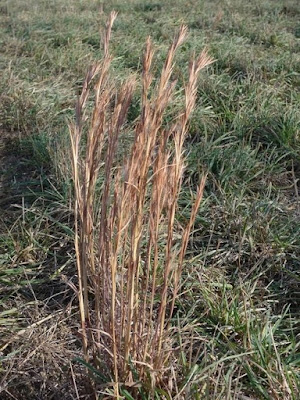Your stop for Clarke, Frederick, Page, Shenandoah, and Warren agriculture and natural resource education.

Thursday, April 29, 2021
American Famiiies Plan and Family Farms
Published in Morning Ag Clips - 4/29/2021
USDA: American Families Plan honors America’s family farms
Plan encourages family farms to stay in the family, does not tax farm & asset transfer to family members upon death
PUBLISHED ON

WASHINGTON — The American Families Plan includes critical tax reform to ensure that the wealthy pay their fair share of taxes in order to finance essential investments in workers and families, including childcare, nutrition, higher education and more. One of those reforms is a change in the way capital gains are treated in our tax system so that, for people making over $1 million, the tax system no longer favors income from wealth over income from work. The plan won’t raise taxes on anyone making less than $400,000 a year.
Part of this plan to make sure the wealthy pay their fair share is a proposal to close the “stepped-up basis” loophole for wealthy estates so that enormous fortunes do not completely escape taxation. Under the proposal, unrealized capital gains (those that have never been previously taxed) are taxed at death above $2 million in gains per couple. But this won’t affect family farms that stay in the family.
- Under this proposal, estimates indicate more than 98% of farm estates will not owe any tax at transfer, provided the farm stays in the family. The tax the remaining less than 2% would owe, would be on their non-farm assets.
The President recognizes the importance of agriculture and family farms to the American economy and way of life. He also recognizes the risks and economic challenges unique to agriculture, family farms and ranching operations across America. The Biden Administration is committed to American agriculture, family farms, ranches and the rural way of life. The American Families Plan protects family farms and ranches in two key ways:
- No capital gains taxes at death for family farms. This plan includes a special protection for family-owned farms and businesses. It defers any tax liability on family farms as long as the farm remains family-owned and operated. No tax is due if the farm stays in the family. No one should have to sell a family farm they inherit to pay taxes and the President’s tax reform guarantees that.
- $2 million exclusion from increased capital gains for all married couples. This plan also excludes the first $2 million of gains per couple ($2.5 million if the farm also includes the family home) from capital gains tax and heirs continue to get step up in basis on those first $2 million in gains. If an heir decides to sell the family farm, the first $2 million in gains is tax free.
How the President’s Capital Gains Reforms Affect Family Farms:
- A married couple with $900,000 of farm gains and $200,000 of non-farm gains passes the farm onto their children. No capital gains taxes are owed, even if they sell the farm because the $1.1 million in gains are below the $2 million per-couple exemption.
- A married couple with $3.0 million of farm gains and $250,000 of non-farm housing gains passes the farm onto their children. No taxes due as long as the children keep the family farm.
The President’s capital gains reforms are a key part of building a tax code that rewards work, and not wealth. The American Jobs Plan and the American Families Plan are once-in-a-generation investments in our nation’s future. The American Jobs Plan will create millions of good jobs, rebuild our country’s physical infrastructure and workforce, and spark innovation and manufacturing here at home. The American Families Plan invests $1.8 trillion in our children and our families—helping families cover the basic expenses that so many struggle with now, lowering health insurance premiums, cutting child poverty, and producing a larger, more productive, and healthier workforce in the years ahead. Together, these plans reinvest in the future of American families, American workers, and the American economy.
To learn more about the American Families Plan, visit the White House.
Monday, April 26, 2021
Thursday, April 22, 2021
Thursday, April 8, 2021
A take on the Virginia Tech Copenhaver Sheep Center
The Copenhaver Sheep Center at Virginia Tech was featured in the VT Daily email today. To see other doodles by our talented artist in residence, visit https://vtnews.vt.edu/email/doodles-page.html... credit to Lori Greiner for sharing.
Tuesday, April 6, 2021
Before you know it will be several will ask about “Buttercup” and the “Broomsedge”
In the spring of the year there will most likely be lots of
stressed fields that will have plenty of color as bright yellow fields may be
seen on almost any sight- seeing trip. “Buttercup” will seemingly have taken
over the unimproved landscapes, fields or even in many improved pastures where
some control measure hadn’t been taken.
This is a relatively easy weed to control with several herbicide
options available, but it’s best done in the late-winter or early spring.
Herbicide applications must be done early while plants are still vegetative.
Even where previous applications had been made, it seemed a second flush of
weeds were compromising some pastures.
Also, in the spring against the backdrop of new dark green
growth can be seen an abundance of “broomsedge” or “broomstraw”. This is a weed
that is often reduced or eliminated by simply getting soil pH and fertility to
recommended levels. It seems that situation isn’t the case for many pastures.
If you are experiencing problems with either of these plants you
may want to call your local Virginia Cooperative Extension office, and speak
with a Extension agent about control measures, fertility and proper forage
management suggestions.





